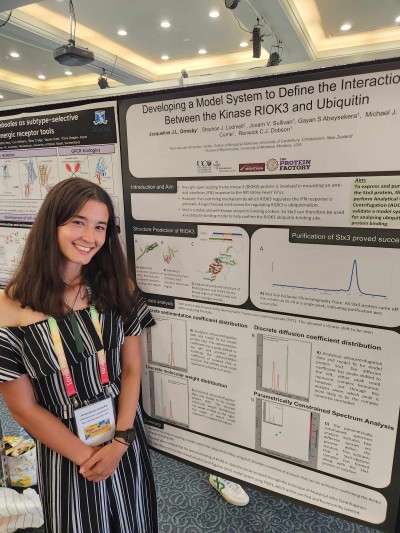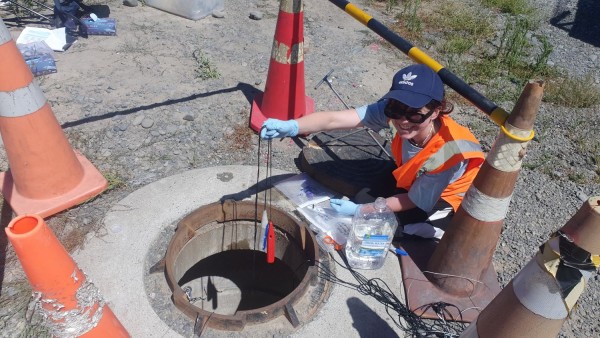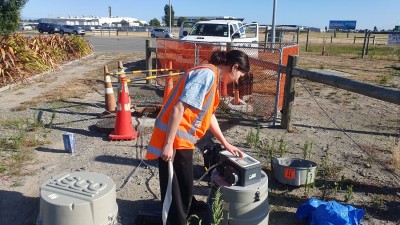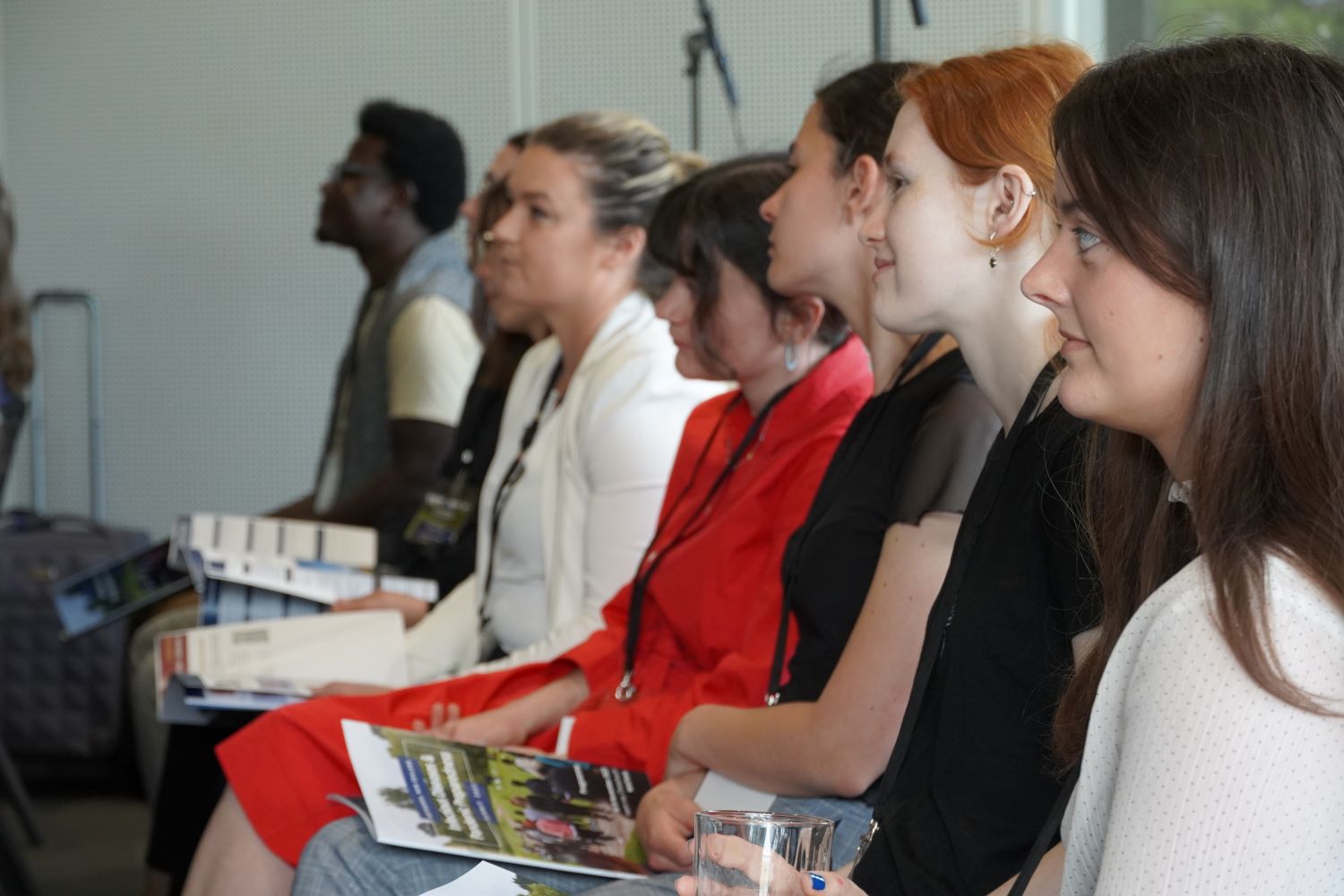Robert Mullin
University of Auckland
Project title: Non-toxic Polymyxin B thioester analogues
Research priority: Therapeutics
Status: COMPLETED
Antimicrobial resistance (AMR) is defined as the ability of pathogenic organisms to survive the action of antibiotics. In OECD countries, up to 17% of all bacterial infections involve AMR, with a predicted 2.4 million to die from AMR infections globally by 2050. Due to systemic inequalities in Aotearoa New Zealand, Māori face higher rates of hospitalisation and therefore the threat of AMR impacts Māori disproportionately. The Polymyxin class of antibiotics destroy pathogenic bacteria by attacking their cell wall, a mechanism for which resistance is slow to develop. However, due to their well established kidney toxicity, they are unsuitable for widespread use. By modifying Polymyxin B, this project aims to produce new analogues which are less toxic to kidney organoids.
RESEARCH PERSONNEL
- Assoc Prof Paul Harris | Primary Supervisor
| Research findings Antimicrobial resistance is an emerging, serious threat to global and NZ health. This means that current antimicrobial drugs will be less effective at fighting infections. This studentship focused on modifying a toxic antibiotic (Polymyxin B) that bacteria are less resistant to, to reduce its toxicity. Four versions of this antibiotic were made and are currently being tested for their ability to kill disease causing bacteria by researchers at the University of Otago. If the antibiotics are effective at killing bacteria, they will then undergo a series of tests to determine their toxicity. This could result in the development of a new antibiotic drug. |
Jacqueline Ormsby
University of Canterbury

Project title: Confirming and Identifying the Ubiqitin Binding site of RIOK3
Research priority: Prevention
Status: COMPLETED
The Rift Valley Fever virus is a disease endemic to Africa with high morbidity in young ruminants. The Rift Valley Fever virus is not present in Aotearoa New Zealand, although with a changing climate, this may change.
Recent research suggests that the protein RIOK3 is involved in mounting an anti-viral interferon response to the Rift Valley fever virus. When the virus attacks a cell, the RIOK3 protein is secreted, triggering antiviral gene transcription. RIOK3 is hypothesised to have a ubiquitin binding site that influences this behaviour. This project involves purification of RIOK3 and characterisation of the binding of RIOK3 to ubiquitin.
RESEARCH PERSONNEL
-
-
-
- Renwick Dobson | Primary Supervisor
- Vanessa Morris | Secondary Supervisor
-
-
| Research findings Recent research has identified a protein known as RIOK3 that plays a key role in the human immune response to Rift Valley Fever Virus. This virus causes dangerous infections (almost 100% abortion rate and high mortality in livestock) and is listed by the World Health Organization as a virus that is likely to cause the next global pandemic. Understanding how RIOK3 operates could hold the key to developing effective treatments against this virus. However, there is still much that is not understood about how RIOK3 functions. One theory is that its activity is regulated through a process called ubiquitination. Interestingly, when the sequence of RIOK3 was first determined, significant differences from similar proteins in its family were identified, making its activity potentially more unique. In this study, the student and supporting research team attempted to produce RIOK3 in the lab for further investigation. While the full-length version of RIOK3 was successfully expressed using bacterial SHuffle E. coli cells, attempts to produce a truncated version were unsuccessful. Additionally, efforts to purify the full-length RIOK3 protein using specialized techniques yielded impure samples, hindering the team’s ability to conduct further experiments. Research efforts are now focused on refining purification methods to obtain a cleaner sample, which will enable a deeper delve into understanding how RIOK3 functions in combating viral infections. This research is a crucial step towards developing targeted therapies to combat the Rift Valley Fever Virus and other related viral infections. |
Ihāpera Esson
University of Otago

Project title: Understanding Māori contact networks for public health infectious disease investigations
Research priority: Prevention
Status: COMPLETED
This study builds on the recently funded HRC project entitled “The elimination of tuberculosis (TB) for Māori in NZ”, co-led by Dr Nina Scott and Professor Philip Hill. In New Zealand, amongst New Zealand-born TB cases 49% are Māori (3.6/100,000 compared to 0.7/100,000 in New Zealand Europeans). Ongoing pockets of transmission in Māori are not being adequately dealt with by traditional TB case contact management approaches. This project will result in development of a Māori case contact management approach to inform a Māori TB control and elimination strategy. The student will be reviewing and collating vital data on case contact management approaches and TB cases in the Waikato to inform the development of the social-network approach and development of the WHIRI programme The project results will be inserted into the co-design phase of the project and the student will have an opportunity to observe an integrated approach to develop a combined Māori TB case contact and WHIRI programme model to pilot for the management of Māori TB cases and their contact networks.
RESEARCH PERSONNEL
-
-
-
- Prof Philip Hill | Primary Supervisor
- Dr Sue McAllister | Secondary Supervisor
-
-
| Research findings In Aotearoa New Zealand, Tuberculosis or TB is a longstanding health issue. TB is an infectious disease imported over 100 years ago when NZ was advertised as a drawcard for wealthy people with TB. Today, amongst New Zealand-born cases, over half are Māori, which is a rate of over five times that of New Zealand Europeans. This document review, by a Summer Student, focused on how public health staff managed notification and follow-up of TB cases and their contacts. Results from this study will be used in a wider project to develop a method that could be used in a TB elimination strategy for Māori. The review found that contact tracing was limited to a narrow range of people classified as close or household contacts. This meant that many people who could have been offered a TB test were not. Furthermore, the review identified missed opportunities for health gain in multiple areas. Assessment of other well-being needs was minimal. The review included 19 people with TB and 196 contacts. The majority of contacts were tested for latent TB infection (LTBI), this is when the TB is not presently infectious or harmful but can become so. Fourteen (11%) of contacts tested positive for LTBI. The major recommendation from this review is to introduce a Māori model of health specifically designed for Māori TB management. This should include expanded access to TB testing and a holistic health needs assessment for whanau to maximise hauora gain alongside progress toward eliminating TB for Māori communities. |
Tanira Kingi
MRINZ
Project title: A randomised controlled trial of the immunogenicity and reactogenicity of subcutaneous vs intramuscular administration of COVID-19 vaccination in community pharmacies in Aotearoa New Zealand
Research priority: Prevention
Status: COMPLETED
Addressing the inequities associated with SARS-CoV-2 vaccination efficacy, this research project aims to uncover the effectiveness of SC vs IM needle-lengths on the immunogenicity and reactogenicity of the bi-valent COVID-19 booster. Having been designed to be delivered IM, our current vaccination strategy does not account for the high levels of obesity amongst our country, and the inability for the needle to reach its desired target of the deltoid muscle. With high proportions of obesity amongst Māori and Pasifika populations in Aotearoa, vaccine immunogenicity and reactogenicity will be compared for in participants who receive a COVID-19 booster with 12.7mm needle (SC) vs 38mm needle (IM). Participants with BMI over 30.2 (women) and 37.3 (men) will be enrolled.
RESEARCH PERSONNEL
-
-
-
- Dr Gabby Shortt | Primary Supervisor
- Prof Alex Semprini | Secondary Supervisor
-
-
| Research findings Previous research has shown standard needles often don’t reach the muscle for people with a larger habitus, however it isn’t known if this has impact on how the vaccine works. The student was involved in the beginning of an ongoing randomised controlled trial investigating the immune response and side effects of the COVID-19 vaccine booster when delivered into the muscle or into the fat directly under the skin. In total 486 participants will be enrolled for this study from pharmacy vaccination sites across the motu. During the student’s time at the MRINZ she developed study materials and assisted the team with essential documents for ethics approval, which is now in place. During COVID-19 vaccination programme Māori and Pasifika whānau were the hardest to get vaccinated, for multiple reasons. Māori and Pasifika have high rates of large body habitus, related to the social determinants of health that impede on their health such as housing, access to healthy food, financial instability, and barriers to accessing healthcare. Therefore, they are at higher risk for incorrect vaccine delivery with current vaccination guidelines. If this study identifies differences in immunogenicity or reactogenecity, this may result in important changes in vaccination guidelines to clarify when a longer needle should be selected. During the student’s time at the MRINZ she developed study materials and assisted the team with essential documents for ethics approval, which is now in place, so recruitment could begin. |
Samantha Samaniego
University of Auckland

Project title: Understanding our current surge in complex pneumonia in children
Research priority: Therapeutics
Status: COMPLETED
The post-COVID era is characterised by changes in the epidemiology and clinical presentations of respiratory infections. One example is the increase in numbers of children presenting with complex pneumonia. Reasons for this increase in complex pneumonia cases are unknown.
Project aims:
-
-
-
- Conduct a systematic review of the epidemiology and clinical presentation of childhood pneumonia, focusing on differences now to what occurred in the pre-COVID era;
- Audit children hospitalised with complex pneumonia at Starship Children’s Hospital during 2023. This audit will inform the development of a case record form for a case:control study of risk factors for complex pneumonia.
-
-
RESEARCH PERSONNEL
-
-
-
- Prof Cameron Grant | Primary Supervisor
-
-
| Research findings In Aotearoa New Zealand, childhood pneumonia hospitalisation rates, particularly among Pacific and Māori ethnic groups, are notably high. Complex pneumonia, a particularly severe form of pneumonia, involves complications like pleural empyema or effusion, when fluid fills the pleural cavity covering the surface of the lung. These present significant challenges in management, and post-COVID, cases have surged possibly due to altered immunity and pathogen dynamics. This summer studentship summarised existing literature on the epidemiology, clinical presentation, and management of complex pneumonia in children, especially focusing on differences between the pre-COVID and current eras within New Zealand. Through a thorough search of the MEDLINE (Ovid) database, 69 articles were reviewed from several different countries worldwide. Key findings include: (1) Complex childhood pneumonia cases increased with the introduction of PCV13 vaccination in many countries, (2) Indigenous populations face higher risk of complex pneumonia, (3) Children receiving ibuprofen before hospital admission are at increased risk (4) Children with poor continuity of primary care are at increased risk of complex pneumonia. There are several different approaches to managing complex paediatric pneumonia, with substantial variation regarding the most suitable treatment approach. There was also an evident lack of research referring to the COVID-19 pandemic and how this has shaped experiences and responses to complex childhood pneumonia. These findings underscore the need for New Zealand-based research into childhood complex pneumonia, especially to understand differences between the pre-COVID and current eras. Such insights are vital for optimising outcomes, particularly in unique populations like New Zealand, which face disproportionate disease burdens and impacts from COVID-related lockdowns. |
Olivia Sloan
University of Otago
Project title: Exploring student decisions about and experiences of participating in a vaccine trial
Research priority: Prevention
Status: COMPLETED
Understanding what students consider when deciding and considering taking part in a vaccine trial is important to optimise engagement and recruitment. This is particularly important for this study which explores alternative means of administering vaccines (including needleless options) and examines the effectiveness of these vaccines so that our communities can be assured of their effectiveness in the future. Those who benefit the most from vaccines include indigenous communities and in Aotearoa whānau Māori. This study aims to use qualitative methodologies to explore what students consider when approached to participate in a vaccine study. A Māori summer student will use qualitative methods to interview Māori students who may or may not have agreed to participate in this vaccine study to explore using thematic analysis their experiences of the process. She will be based with other summer students at Kōhatu Centre for Hauora Māori and co-supervised by a Māori paediatrican Dr Liza Edmonds. Once completed her findings will provide valuable information for researchers in the area of vaccine infectious preventable diseases to optimise indigenous participation in rangahau such as this.
RESEARCH PERSONNEL
-
-
-
- Dr Liza Edmonds | Primary Supervisor
- Melanie Millier | Secondary Supervisor
-
-
| Research findings Many countries have low rates of diseases such as measles including Aotearoa (New Zealand). However, waning immunity is a potential threat to maintaining this, with increasing cases of measles infection in young adults despite 2 doses of measles, mumps, and rubella (MMR) vaccine. Alternative ways of delivering vaccines (by aerosol with no needle) and intradermal (micro-needle) are currently being investigated in the MAXXED MMR clinical trial. Future findings from the trial may optimise vaccine participation especially among whānau Māori. Questionnaires were designed and distributed to current study participants (92) and eligible non-participants (100). Responses were received from 26 study participants and 19 non-participants. Those identifying as Māori ethnicity and consenting to a follow-up interview (6 participants; 1 non-participant) were interviewed via zoom using the hui process to explore their experiences of being invited to participate in a vaccine alternative administration trial. Overall themes arising from the interview transcripts were derived using NVivo software. Key themes that emerged were 1) whakawhanaungatanga (reciprocal relationships), 2) kōkihi (interest in innovation), 3) mātua ā-wheako (lived experience) , 4) tiakitanga (trust) and 5) ka mua ka muri (preconceived beliefs). The findings of this qualitative study will be used to enhance the ability of the rangahau to optimise communication with and participation of Māori students in the 2024 recruitment round. Insights gained provide the opportunity to optimise a pro-equity approach in vaccine trials for whānau Māori with potential long-term benefits for whānau in Aotearoa. The student was part of the Health Research Council- funded study “Measuring and Boosting Waning Immunity to Measles”, led by Professor McIntyre. |
Lena Cassin
University of Otago
Project title: Assessing animal coronavirus spill over risk in Aotearoa
Research priority: Surveillance
Status: COMPLETED
As the coronavirus pandemic has had such a high impact on people’s lives and the virus is still prominent in both human and animal population it is very important to track the possible jumps between species. The corona spike protein is a highly mutating part of the virus and has been shown in the literature to only requires a small mutation to be able to bound to human cells. This project aims to figure out if spikes from pet of highly frequented animals from Aotearoa, such as cats, dogs, deers or pekapeka, are likely to mutate and infect the humans close to them to prevent the country from another coronavirus outbreak.
RESEARCH PERSONNEL
-
-
-
- Dr Alice Eruera | Primary Supervisor
- Assoc Prof Mihnea Bostina | Secondary Supervisor
-
-
| Research findings This project aimed to express and purify Spike glycoproteins from animal Coronaviruses to track possible mutations that could jump from animal to humans. It has been known for some time now that Coronaviruses can jump from one species to another and that some part of the protein are highly mutative. During this project the student and wider research team managed to express and purify an endemic bat spike protein (pekapeka) which were prepared for negative stain and will be taken to Australia for Cryo-EM (cryo-electron microscopy) imaging. Efforts were made to express and purify two more spikes from turkeys and bovines, unfortunately the yield of expression wasn't high enough for further investigation. These three proteins were expressed in the EXPI-CHO cell system but none of the spikes express the same way. Turkey and Bovine require more troubleshooting to be able to prepare them for Cryo-EM. These findings are important to prepare for new outbreaks of Coronavirus that could be resistant to current vaccines. |
Feya Durkin
Victoria University of Wellington

Project title: Sampling wastewater from buildings for better infectious disease surveillance
Research priority: Surveillance
Status: COMPLETED
Wastewater is a rich source of information about infectious diseases circulating in the community. During the COVID-19 pandemic, wastewater samples provided insights into how the pandemic was progressing, including the amount of virus in different communities and how variants change over time. Less attention has been placed on sampling at smaller scales such as buildings, where it is likely that collection frequency and/or methodology needs to change. This project will investigate use of various types of sampling equipment, deployed at various distances and sampling intensities, for the collection of wastewater from a single building.

RESEARCH PERSONNEL
-
-
-
- Dr Joanne Chapman | Primary Supervisor
- Dr Brent Gilpin | Secondary Supervisor
-
-
| Research findings The student investigated the efficacy and practicality of small-scale wastewater-based epidemiology (WBE). WBE is a technique used to identify pathogens present in wastewater and has previously been used for such purposes as monitoring levels of SARS-CoV-2 (the virus that causes COVID-19 disease) within the population. Sampling is typically done at wastewater treatment plants to provide data for communities, allowing for unbiased and broad-scale infectious disease surveillance. In this project the student investigated and refined techniques for WBE for local-scale sampling, for example at the level of a single building. Such sampling could be useful, for example, to pinpoint the source of an infectious disease outbreak or confirm no infected individuals are present in a specific location. To this end, the student amd her research support team flushed animal faeces (cow, sheep and bird) in a building and collected wastewater samples 1-km downstream. This was done to mimic pathogen deposition by infected individuals using the toilet. Because individuals tend to only use the toilet sporadically during the day, a pathogen signal may only appear intermittently in wastewater, especially when few individuals in the population are infected. Or it may be that the pathogen signal diffuses widely in the wastewater sample and is detectable for extended time-periods. The team used molecular methods to detect bacteria associated with the animal species whose faeces were flushed, along with human-associated bacteria and viruses. They found that sampling method and frequency had important effects on detection probability. For example, SARS-CoV-2 was detected in 100% of samples that were collected nearly continuously across a 15-minute window, but only 79% of the time if a single sample was collected within that timeframe, revealing that pathogen signals can be extremely transient in wastewater. The project will provide improvements in the way wastewater sampling is conducted at small spatial scales. |
To'oa Tofamamao Brown
University of Otago
Project title: The Role of Bacterial Signals in Regulating Activation of Antibacterial MAIT Cells
Research priority: Prevention
Status: COMPLETED
Mucosal-associated invariant T (MAIT) cells are a subset of T cells that have similar qualities to innate effector T cells. Activation of MAIT cells can occur through the binding of their T cell receptor (TCR) and an antigen presented by an MHC class-I related (MR1) molecule. Nod-like receptors (NLRs) are pattern recognition receptors that are found on APCs. The Ussher lab study how NLR agonists can stimulate TCR-mediated MAIT cell activation. This project will continue analyse this relationship, looking at the importance of NLR signalling and whether it contributes to direct or indirect stimulation of MAIT cell activation.
RESEARCH PERSONNEL
-
-
-
- Prof James Ussher | Primary Supervisor
-
-
| Research findings Mucosal associated invariant T (MAIT) cells are a unique subset of immune cells that play an important role in our body’s antibacterial response. MAIT cells are abundant in the human body making up approximately 2.6% of the total T cell population in peripheral blood and are commonly found in mucosal sites, the liver, and gut. Research has shown the potential use of MAIT cells in future treatments such as vaccines and cancer immunotherapies. Before these MAIT cells can be used in such treatments, it is important to learn more about them and the effect that different molecules and chemicals have on them. The student developed a model where MAIT cells can be expanded outside of the body, in vitro. The student will continue to improve the model in their 2024 Honours project. Once this model is satisfactory, cytokines and chemicals can be added to the MAIT cells to assess if they have any effect on MAIT cell expansion and function. |


